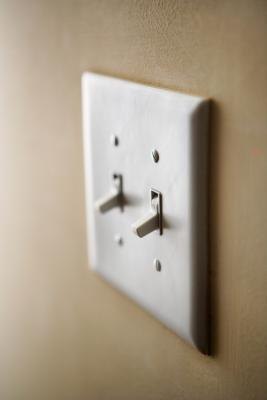Wednesday, December 25, 2013
How a Car Relay Works

Automotive wiring systems arent the simplest thing on the planet, but they arent the most complicated either. When you break the electrical system down into its component parts, you find that it consists mainly of simple circuits and equally simple switching gear. Relays are one type of electrical switch that manufacturers install to minimize production costs and maximize safety.
Electrical Basics
A relay is essentially a switch that you dont have to flip. Electricity is the movement of electrons, and moving things, by definition, have an origin and a destination. Think of electrons like cars on a racetrack that move around it at the speed of light; if you suddenly remove a section of track, then the race stops because all the drivers fall into the hole and get smashed into atoms. Electrical circuits work the same way. As long as the circuit or track stays intact, the electrons can continue their race.
Relay Basics
A relay is basically just a switch that you dont have to flip, and a switch is a means of removing a section of the circuit. When you flip a light switch to the On position, its internal connections close the circuit and allow electricity to flow through it. Now, imagine the switch lever is made of metal instead of plastic and youre standing next to it with a magnet. Using the magnet, you can flip the switch on and off without touching it. But moving the magnet isnt practical, so what you need is a magnet that you can leave in place but turn on and off.
Induction Coils and Electromagnets
Anything moving through a gravitational field produces a magnetic wake, and it doesnt matter if that moving thing is an electron or a Boeing 747. Most metals have small regions of magnetism inside called magnetic domains, but those domains point in all different directions so they cancel each other out. Wrap a coil of wire around a metal rod and send electrons flowing through the wire and you create a magnetic "tornado" around the rod. This vortex gets all of the magnetic domains temporarily pointing in the same direction, turning the metal core into an electromagnet.
Relay Construction and Function
Youve undoubtedly connected the dots by now: a metal armature arm inside the relay is spring-loaded to stay open, but when the electromagnet under it activates, the armature comes down and closes the circuit. The idea behind using a relay is that it takes far less current to energize the electromagnet than the circuit would normally use. That means that, although your starter may require 50 amps of current to spin the motor, your ignition key mechanism only needs to pass 0.50 amps to energize the magnet. This allows manufacturers to use thinner-gauge wire and lighter-duty switching gear without risk of frying the wire or the switch.
No comments:
Post a Comment